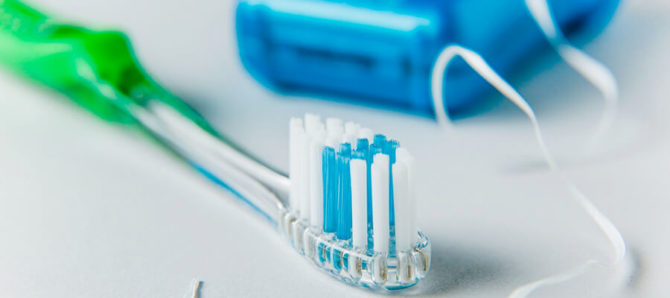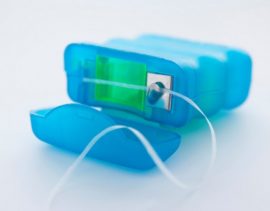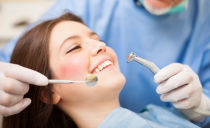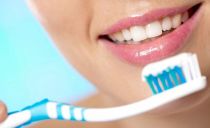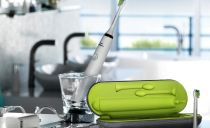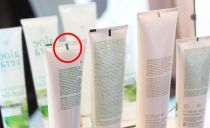Dental floss: why you need, which one to choose
Timely and properly performed oral hygiene is the key to health. The remains of food on the teeth, gums, in the interdental space provoke the formation of plaque, the appearance of caries. And if a toothbrush is enough to care for teeth and gums, then a specialized dental floss is needed for interdental spaces.
In order to qualitatively cleanse the oral cavity from plaque, it is important not only to regularly use dental floss, but also to do it as correctly as possible: observing all the recommendations of dentists.
Content
When and why is a thread needed
Dental hygienists recommend using floss or floss (the second name for floss) every time you brush. The minimum amount of use is two: in the morning after breakfast and at the end of the day before bedtime. However, you can apply it more often, as necessary.
Dental flossing will not be an equivalent substitute for traditional oral care, but will help maintain hygiene outside the home: after a snack at work, visiting a cafe, drinking tea at a party.
Application rules
For thorough processing, it is better to use the thread length of 45-50 cm. This length is enough to clean each interdental space with a clean piece.
Having pulled the material from the roll, you need to cut it with the built-in cutter. Then:
- Wind ends on middle fingers.
- Hold the middle section with your thumb and forefinger so that at least 5 cm of free material is left between your hands.
- Carefully insert the floss for brushing your teeth into the interdental space of the upper jaw, treating each area in turn.
- Similarly, clean the contact surfaces of the teeth of the lower jaw.
Enamel must be cleaned carefully, without sudden movements. So as not to injure the gums.
How to Floss Teeth: Video
Dental floss: main types
In shape, the flosses for brushing your teeth are divided into several types:
- flat;
- round;
- tape
- products with different thicknesses (superfloss).
Finding the right look is easy. The first is an ideal tool for holders of tightly set teeth. The second is the right choice with significant interdental space. Tape is better to choose with trams and diastems. Superfloss is an excellent tool for cleaning dentures, braces, orthodontic structures.
Which thread to choose
Dentists advise which dental floss to choose. Based on the characteristics of the teeth and the condition of the gums, doctors recommend these or other varieties. Competent dental consultation is the best help in choosing.
With or without wax
On sale in Moscow and not only there is dental floss waxed and non-waxed. It’s easy to choose. The waxed floss glides well. After waxing, the material easily penetrates between the most crowded teeth.
In application, such a thread is simpler, characterized by strength, resistance to delamination. Therefore, it is advised to apply to beginners.
Unwaxed thread cleans better. Its difference is close contact and a large coverage area. However, it is this species that is more traumatic, therefore it is possible to clean the interdental space with non-waxed material only if there is some experience.
Impregnation and additives
The most popular impregnation is peppermint extract. It processes both waxed and non-waxed thread. Freshness, pleasant aftertaste after cleaning users like. Therefore, mint floss breaks all records.
Some manufacturers add fluoride to the produced flosses., but classical dentistry does not support the postulates about the need for this supplement.
Studies have shown that fluoride and calcium work more effectively in toothpaste. Cleaning with fluoride fiber alone is not enough to regularly strengthen tooth enamel.
Doctors consider a little exaggerated benefit from the antiseptics included in the dental thread. Moreover, these species are prohibited for continuous use in adolescents and young children.
Their use is justified only in adults in the presence of injuries, microcracks, infections of the oral cavity. Do you need dental floss soaked with antiseptic composition and how often to use it, only a doctor can tell.
Flosstiki: description and advantages
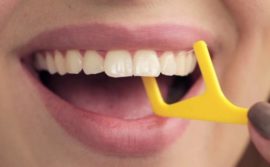 In addition to traditional rolls in compact plastic packaging, there are threads on the holders. The best version is flosstick. On one side of this device is a fiber stretched between the ends (see photo). On the other is a toothpick.
In addition to traditional rolls in compact plastic packaging, there are threads on the holders. The best version is flosstick. On one side of this device is a fiber stretched between the ends (see photo). On the other is a toothpick.
Advantages of flash sticks:
- hygiene of the procedure (fingers are not involved);
- lack of need to open your mouth wide;
- one-handed operation.
The thread on the holder can be waxed and non-waxed, with and without additives. Various types are available: with a flexible holder, long and short, small and large, in the form of figures of animals that will delight children.
Most users pick flosstiki for travel. It is convenient, and the packaging does not take up much space.
Braces and Superfloss: how to use
Ordinary dental floss is not suitable for the care of bracket systems. For adolescents, namely they are often carriers of fixed orthodontic structures, hygienists are advised to purchase superflosses. Their dignity in a unique structure.
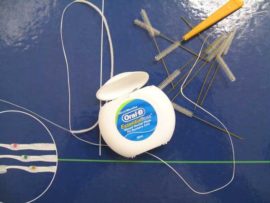 Any superfloss contains three parts:
Any superfloss contains three parts:
- The usual thread for teeth on which there are no structural elements.
- A hard, coarse fiber tip for easy threading in an arc.
- Swellable fiber made from sponge material.
The spongy part is the most voluminous, as you can see by looking at the photo. It is she who qualitatively removes accumulated plaque and pieces of food stuck behind orthodontic plates and arches.
To free the oral cavity from foreign elements, you need:
- introduce the solid part under the arc;
- stretch the thread to the spongy fiber;
- make several translational movements;
- stretch the segment to the end, remove it.
Often children make a gross mistake using the same portion of floss for different teeth. This is unacceptable in the case of regular floss, and when using superfloss. Microbes are not simply removed, they are spread throughout the oral cavity, only exacerbating the situation.
Doctors tell in detail what specialized dental floss is and how to use it correctly. It is up to the parents to monitor compliance.
Do children need dental floss and why
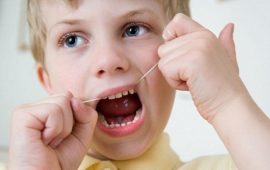 Children learn to brush their teeth thoroughly from early childhood. Floss can be included in the list of necessary hygiene products from 8–9 years old. At this age, the child consciously uses the tool, can control the tension, the correct use. But only if his parents had taught him this before.
Children learn to brush their teeth thoroughly from early childhood. Floss can be included in the list of necessary hygiene products from 8–9 years old. At this age, the child consciously uses the tool, can control the tension, the correct use. But only if his parents had taught him this before.
It is good when the baby at first observes the process from the outside - so he quickly understands why dental floss is needed and how to use it. And, most importantly, he considers this stage of cleaning natural and mandatory.
Children's dentists insist on using cleaning fiber not only during morning and evening cleansing, but also between meals. Soft baby teeth of at least adults are susceptible to the destructive effects of bacteria, plaque, caries. Therefore, to teach a child how to use dental floss is an important task for any parent.
Why caution is needed
Often adults themselves become violators of the rules. Haste, careless movements, too large amplitude cause the appearance of scratches, damage to soft tissues.
The consequence may be:
- infection;
- inflammatory process;
- gum injury;
- tooth loss.
It must be remembered that a thread is an auxiliary tool. With its help it is impossible to process the entire surface. This is what distinguishes it from toothpaste, rinses.
Care must be taken to carefully handle the accessible interdental spaces. If a thread not treated with wax causes permanent injury to the gums, waxed will come to the rescue. With her, such excesses are practically excluded.
When to use: before or after brushing your teeth
Everyone knows how to floss often. But when to do it - before cleaning with paste or after, experts still argue. This is confirmed by numerous videos on the Internet.
There are two opinions:
- Use up pasta. In favor of this method is the fact that by the time of the final brushing, all food particles and plaque from the interdental space will be removed, brought out. It remains only to collect them with a brush.
- Use after paste. Advocates of this method argue that the floss helps to "convey" fluoride from the paste to the entire surface of the teeth, as if rubbing it. And this opportunity cannot be neglected.
You can choose any method. The main thing is to regularly follow the advice of your dentist.

